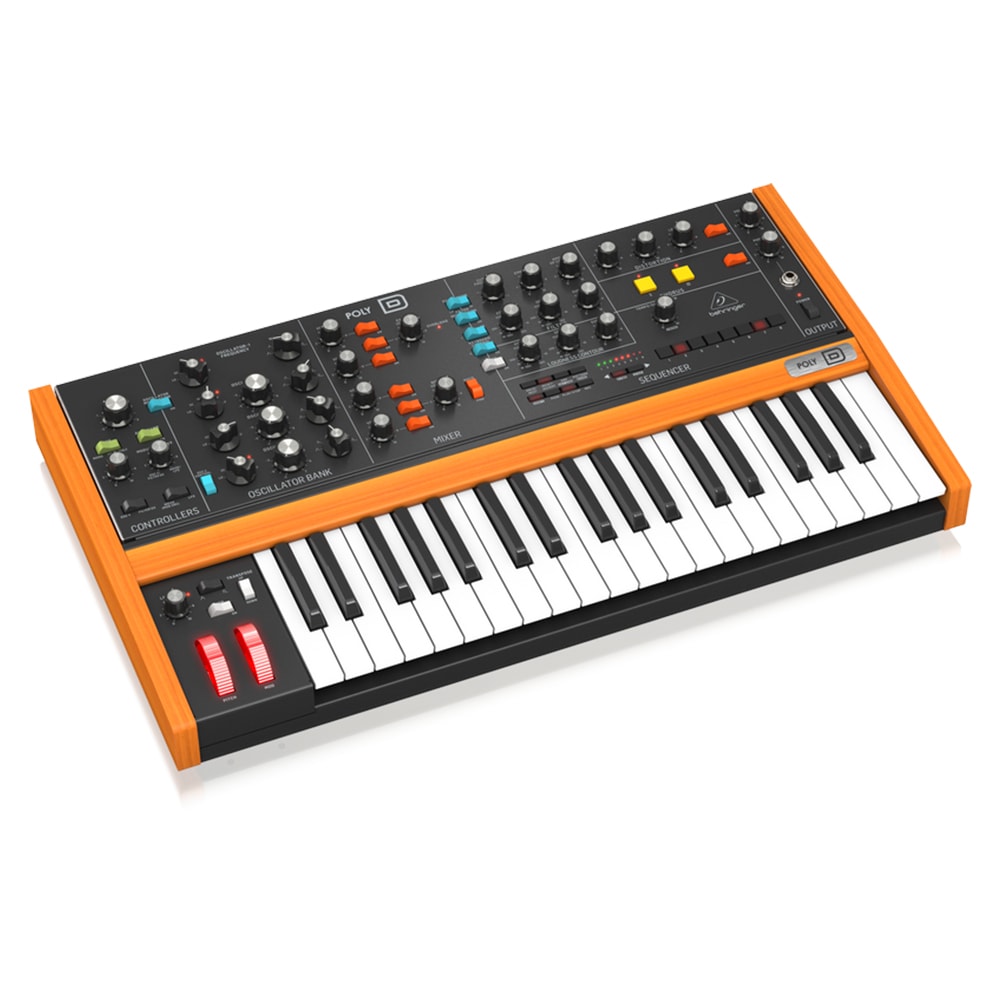Behringer POLY D
The Behringer POLY D brings you a 4 Voice Polyphonic Synthesizer with 37 Keys. Taking the architecture of the Model D (MiniMoog Emulation), and using it to create a powerful 4-Voice, polyphonic instrument.
Insanely fat POLY D sounds
The iconic synth tracks laid down in the ’70s and ’80s have been forever inscribed in progressive rock, jazz fusion, and synth-pop. With the Behringer Poly D’s pure analog signal path and renowned VCO, VCF, and VCA circuits; you can re-create those classic, sought after sounds. As well as craft your own fat sounds to spark new levels of inspiration to your production.
Your musical time machine
Quickly and easily whip up virtually any monophonic, or polyphonic analog synth sound you can dream of. Using the POLY D’s authentic VCO, VCF, VCA, and ladder filter designs that work in unison with the four, fully-analog triangle/square VCOs. As a result, you’ve got your own synthesizer time machine. Allowing you to dig up those retro, classic sounds, or pave the way for the future of synth!
True to the original
Furthermore, staying true to the original, the Behringer POLY D boasts the same D-type circuitry with matched transistors and JFETs; ultra-high precision 0.1% thin-film resistors, and polyphenylene sulfide capacitors. This immaculate attention to detail is what gives the POLY D such flexible sound-shaping capabilities. So whether you want to garner up ultra-fat basses, searing lead tones, brilliant effects, or classic prog-rock organ sounds – the Behringer POLY D has you covered!
Three modes to choose from
With the Behringer POLY D, you’ve got three modes to choose from. Including monophonic, polyphonic, and unison. Usinf the Mono mode, you’ll enjoy the characteristics of a classic mono synth, with even fatter basslines. While Poly mode lets you play up to four-note chords to produce luscious harmonies and pads; adding a whole heap of soul to your music. Then, Unison mode thickens your sound by layering all four voices on top of each other; giving you a richer, and fuller sound. On top of that, the Poly D features two beloved circuits from the 1980s. Including the J60-modeled BBD Stereo analog Chorus, and a DS1-modeled analog Distortion (overdrive) circuit.











